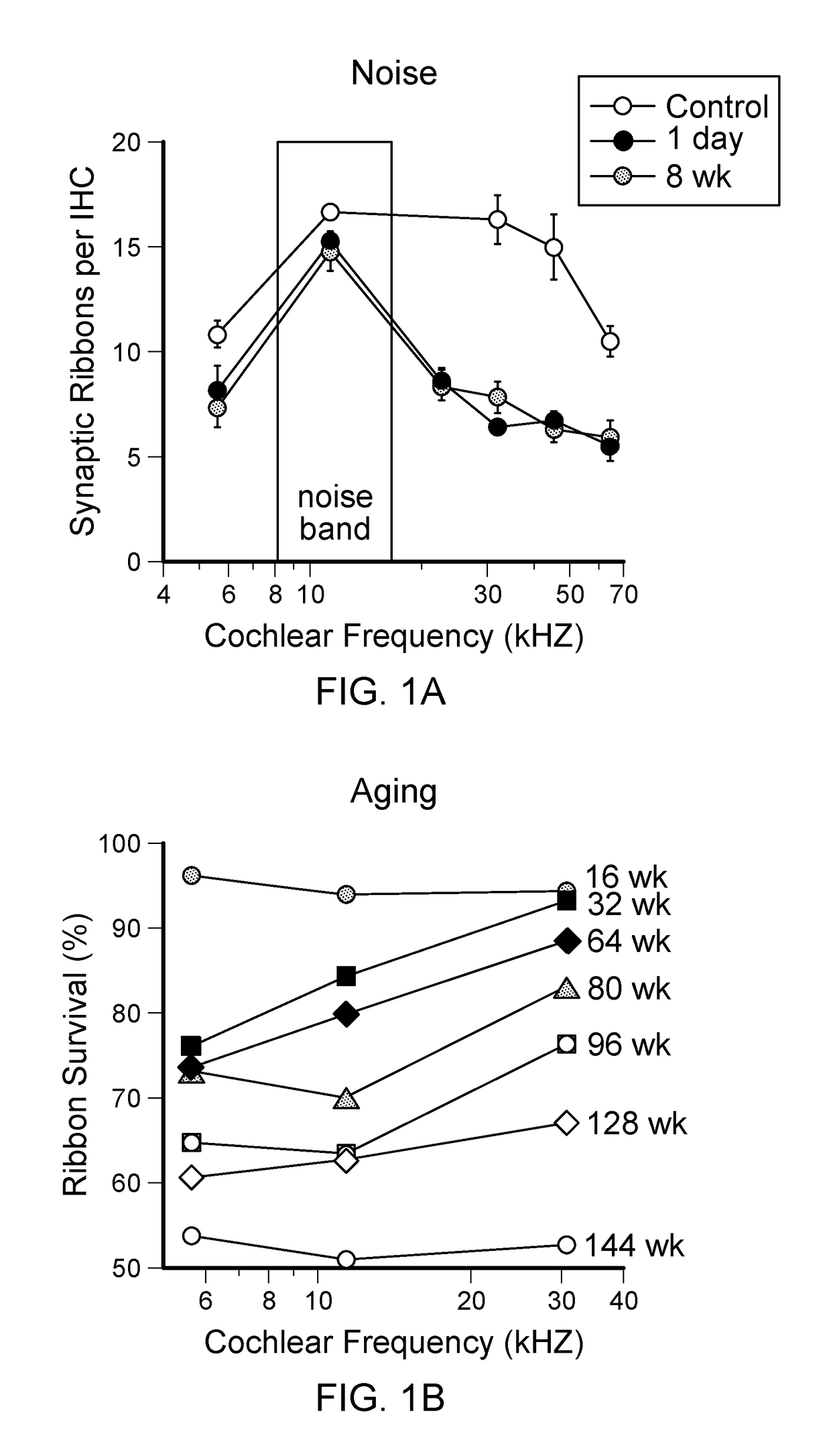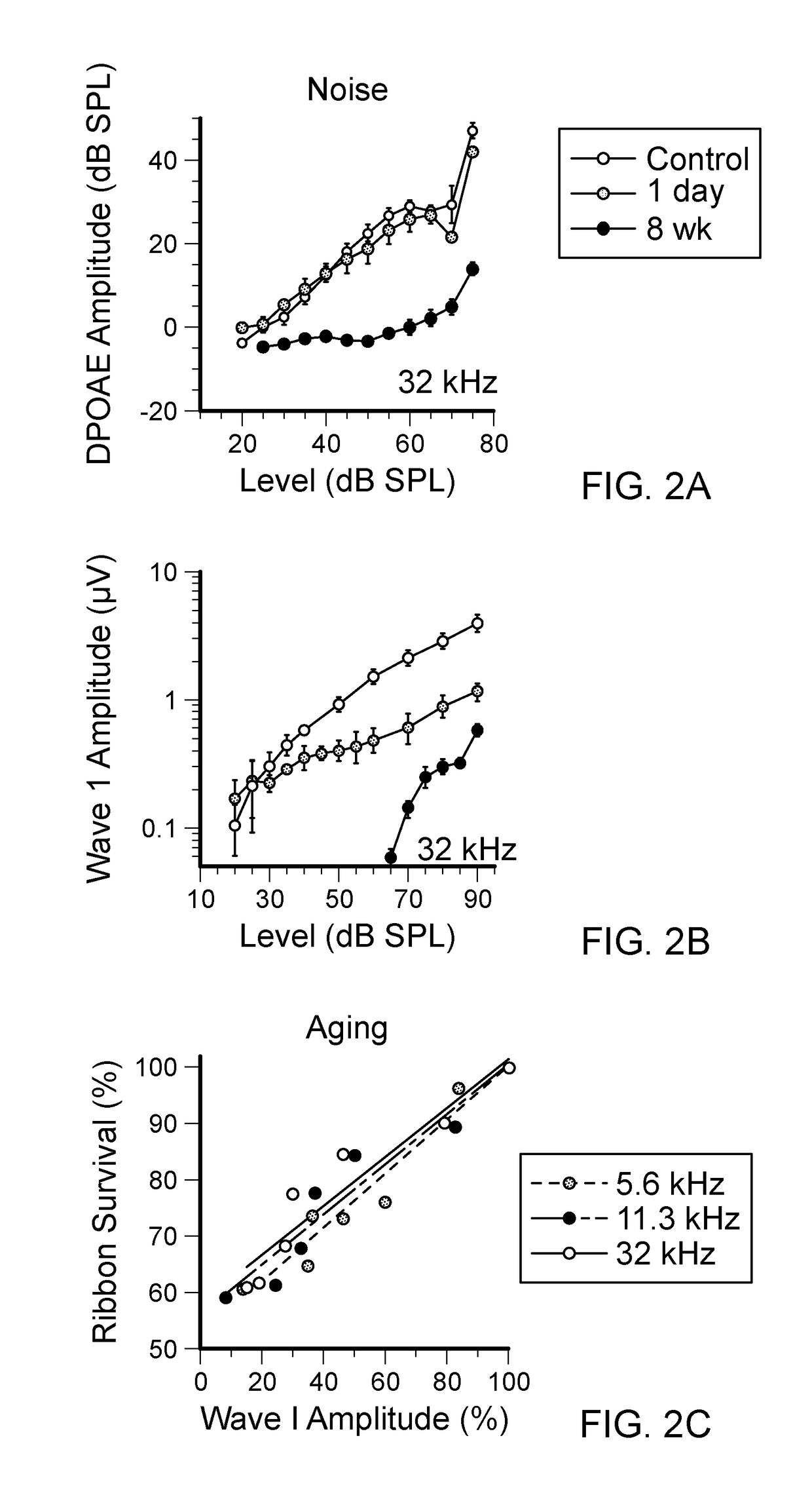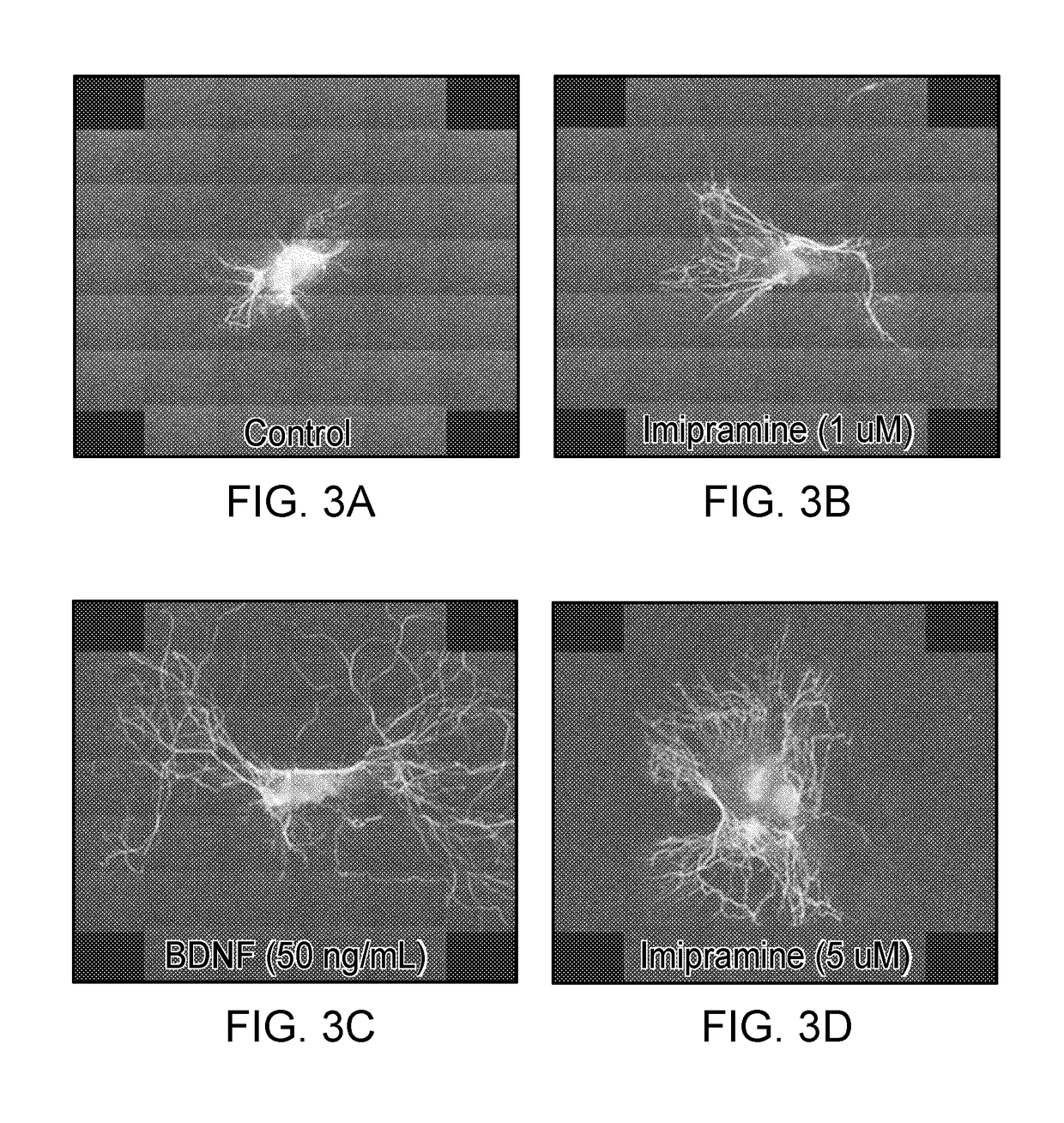Treating Cochlear Synaptopathy
a cochlear synaptopathy and cochlear nerve technology, applied in the field of cochlear nerve synaptopathy, can solve the problems of delayed loss of neurons themselves, increased and loss of synaptic communication that would be expected to have significant consequences for function, so as to reduce the risk of developing hidden hearing loss and treat or reduce the risk of developing hearing loss
- Summary
- Abstract
- Description
- Claims
- Application Information
AI Technical Summary
Benefits of technology
Problems solved by technology
Method used
Image
Examples
example 1
Function: Neural Response Amplitudes Reveal What Thresholds do not
[0063]In studying functional consequences of such loss, we have employed two complementary techniques. The auditory brainstem response (ABR) and the compound action potential (CAP), measured from scalp or round-window electrodes respectively, are sound-evoked potentials generated by neuronal circuits in the ascending auditory pathways: the first ABR or CAP wave represents summed activity of the cochlear nerve (Buchwald and Huang (1975). Science 189:382-384; Antoli-Candela F, Jr., Kiang N Y S (1978). “Unit activity underlying the N1 potential.” In: Evoked Electrical Activity in the Auditory Nervous System (Naunton R F, Fernandez C, eds), pp 165-191. New York: Academic Press). To complement these measures of cochlear output, we assess OHC function via distortion product otoacoustic emissions (DPOAEs). These acoustic signals are created and amplified by the cochlear epithelium and measured in the ear canal. They require ...
example 2
of Neurotrophic Support in Treatment
[0067]The noise-induced damage to cochlear nerve terminals, and the subsequent loss of the neurons themselves, may arise directly from an acute, ‘excitotoxic’ event instigated by the noise. Swelling of cochlear nerve terminals is seen in the IHC area minutes to hours after overexposure, even when threshold shifts are ultimately reversible (Robertson (1983). Hear Res. 9:263-278). It is present after the synaptopathic exposure we have described here. The same acute swelling is observed after cochlear perfusion of glutamate agonists, and is minimized by glutamate antagonists, with the same recovery of cochlear neural thresholds (Puel et al. (1991). Neurosci. 45(1):63-72; Puel et al. (1994). J Comp Neurol. 341:241-256). We have hypothesized (Kujawa et al. (2009)) that the afferent terminal retraction that follows the acute excitotoxic swelling interrupts necessary neurotrophic support, ultimately resulting in the death of affected neurons
[0068]Neurotr...
example 3
n of Synapses Between Hair Cells and Spiral Ganglion Neurons
[0070]In Vitro Studies.
[0071]Afferent synapses can be ablated by kainate administration, which mimics the effects of noise damage to peripheral axons of SGN, including retraction of the peripheral fibers. When performed in a newborn organ of Corti in vitro, the axons regenerate to contact hair cells and make new synapses. This system is used to further test Trk agonists for effects on the loss of peripheral synapses (Tong et al. (2013). J Assoc Res Otolaryngol. 14(3):321-329).
[0072]The organ of Corti is isolated to perform explant experiments. The cochlea is dissected from 3 to 5 day old CBA / CaJ mice. The heads are bisected midsagittally, the cochleas removed and dissected in ice cold Hank's balanced salt solution (HBSS), gently freeing the otic capsule and spiral ligament. The tissue is oriented in a 4-well dish coated with fibronectin so that the apical surfaces of the hair cells are pointing up and the basilar membrane i...
PUM
| Property | Measurement | Unit |
|---|---|---|
| Time | aaaaa | aaaaa |
| Time | aaaaa | aaaaa |
| Time | aaaaa | aaaaa |
Abstract
Description
Claims
Application Information
 Login to View More
Login to View More - R&D
- Intellectual Property
- Life Sciences
- Materials
- Tech Scout
- Unparalleled Data Quality
- Higher Quality Content
- 60% Fewer Hallucinations
Browse by: Latest US Patents, China's latest patents, Technical Efficacy Thesaurus, Application Domain, Technology Topic, Popular Technical Reports.
© 2025 PatSnap. All rights reserved.Legal|Privacy policy|Modern Slavery Act Transparency Statement|Sitemap|About US| Contact US: help@patsnap.com



